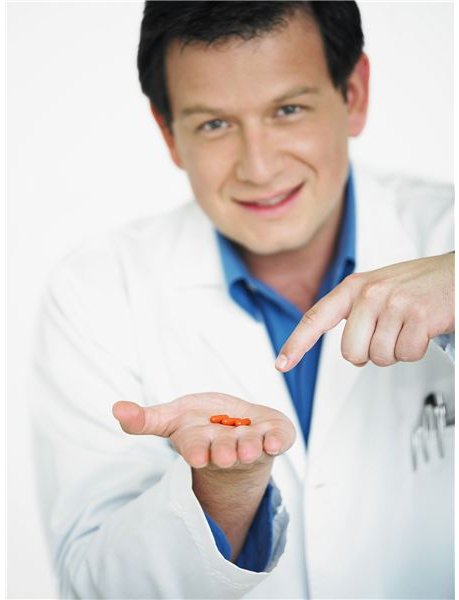The Hidden Dangers of Medical Trials: Know the Risks
The economy is tough but is participating in a medical trial the way to go? It seems like fast money but before you commit here are some facts about the industry’s history and common practices today, along with some precautions.
The Inducement: You may have heard a radio blurb about medical trials, or have seen an ad in your state’s newspaper about participating in a medical trial. It is a well-known fact that the more invasive the medical procedure, the more profitable the payoff.
Could you picture someone putting a fiber-optic tube in your mouth and down your throat to examine your gastrointestinal tract for three days? A thirty-year old massage-therapy student, James Rockwell, has participated in many such trials, and he’s not afraid to say he’s been enrolled in over twenty studies for money in Philadelphia, an area known for its medical schools and its lengthy drug-industry corridor leading all the way to Jersey.
Who Performs Medical Trials?
The pharmaceutical trials so popular with university and teaching hospitals prior to 1991, are now done in more clinical, business-like settings; and the financial pressure to bring drugs to the market have spawned more commercial-research enterprise. The largest of the new businesses are called “contract research organizations” (CROs) and include names such as Quintiles, Covance, Parexel and Pharmaceutical Product Development (or PPD). These large firms are contracted to drive a product through every aspect of development, from subject recruitment and testing, to FDA approval—and to do it quickly because the life of a patent and its subsequent high profits is only 20 years—so speed is critical.
Who are the Subjects? The medical trial subjects may be unemployed college students, contract workers or even semi-pro research subjects and, in Austin and Philly where some of the largest studies are done—the repeaters are referred to as “guinea pigs”.
What’s the Program? Most medical trial subjects enroll in Phase I clinical trials where the safety of a potential drug is examined by giving it to healthy subjects. Phase II trials are typically charged with researching proper dosage requirements and determining beneficial or therapeutic effectiveness. Phase III trials are generally large scale and are comparative—such as testing a new drug against known standard treatment—and mostly they are attended by patients who are already ill and seeking a new drug or treatment in exchange for a cure.
Enrollment and Trial Sites
Professional guinea pigs look for locations that have televisions, video games and wireless Internet access. One Philadelphia veteran had a $1500 payoff for three days at a university hospital and two endoscopies in a hotel-like environment. But there are also historical tragedies such as with a Miami-Dade County facility that, in May of 2006, was cited for health violations and ethically dubious conditions and cost the firm, SFBC International, millions of dollars in a class action law suit. The downtrodden neighborhood it was held in housed six hundred and seventy-five beds holding many illegal immigrants, eight subjects to a room.
FDA regulations require that any study in support of a new drug be approved by an IRB, an institutional review board. But with big money to shepherd in new drugs comes big attempts at corruption and payoffs. The Office for Human Research Protections in the Department of Health and Human Services has jurisdiction only over research funded by the department.
Enrollment: At enrollment recruiters are supposed to review and ask subjects to sign various documents but if they have a financial incentive to provide people, they push through anyone. Oftentimes when a serial guinea pig wants in on a trial, they will not admit to having recently taken other drugs. Mostly, the motivation for doing studies is purely financial in many aspects, and there are also extra financial incentives for the study participants to stay in and complete the trial. With no one having altruistic feelings about the work, healthy volunteers juggle the risks against the payoff and the ethical question remains: what happens when everyone involved sees it as a money-making enterprise?
Tips for Those Considering the Option
If you are contemplating being in a trial, ensure that you retain the right to sue for adverse effects and maintain the right to withdraw from a trial at any time. Roberto Abadie, an anthropologist who studied human volunteers and is author of The Professional Guinea Pig: Big Pharma and the Risky World of Human Subjects says after his year in the field—volunteers underestimate their long-term risks and universities should do more to protect them.
Carl Elliott writes in his book, White Coat, Black Hat: Adventures on the dark Side of Medicine, that, in our patchwork-style regulatory system, no one is keeping track about how many injuries and deaths befall healthy subjects in clinical trials. Nobody is monitoring the effect that so many trials have on the health of serial guinea pigs, and nobody is even entirely certain whether trials generate reliable data. And, unfortunately, according to a recent John Hopkins study, the vast majority of already published and relevant clinical trials of a given drug, device or procedure, are routinely ignored by scientists conducting new research on the same topic.
References
- Elliott, Carl. White Coat, Black Hat: Adventures on the Dark Side of Medicine. Boston: Beacon Press, 2010. Print.
- Participating In Medical Studies To Pay The Bills http://www.huffingtonpost.com/2012/07/24/participating-in-medical-studies-for-money_n_1699337.html
- Inside the Risky World of Drug-Trial ‘Guinea Pigs’ http://chronicle.com/article/Inside-the-Risky-World-of/66225/
- Making Money From Clinical Trials: Worth the Risk? http://www.wisebread.com/making-money-from-clinical-trials-worth-the-risk
- Clinical Trials Cited for Ignoring Previous Relevant Researchhttp://www.hopkinsmedicine.org/news/media/releases/clinical_trials_cited_for_ignoring_previous_relevant_research
